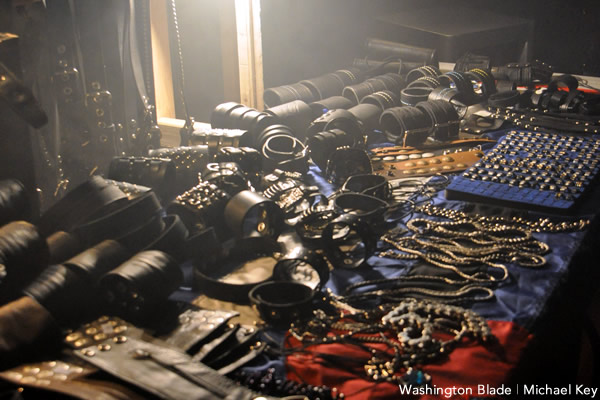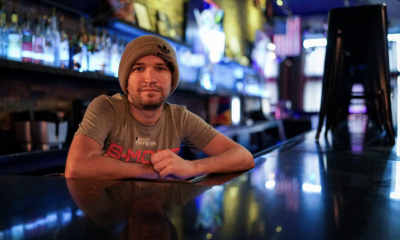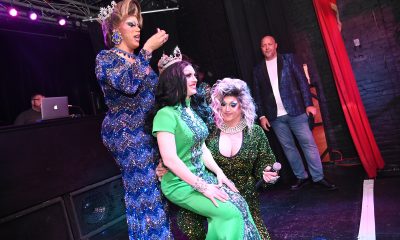Arts & Entertainment
The evolution of leather
Changes in ownership, location, technology contribute to morphing BDSM scene
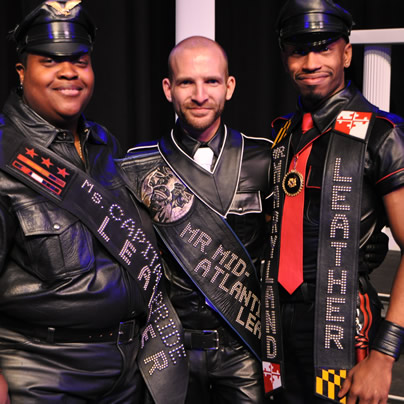
There’s a lot of change in the air with the D.C. gay leather community. As Mid-Atlantic Leather Weekend is in town for its annual festivities, we decided to ask around and see if the changes are just coincidental, natural evolution of a maturing scene or indicators of a larger cultural shift of some type.
The bottom-line answer, not surprisingly, is that it depends whom you ask.
KEEP UP WITH EVERYTHING M.A.L. WITH OUR SPECIAL COVERAGE PAGE
But first, the particulars.

On Foursquare? Sync your M.A.L. weekend To-Do list with ours, and connect with the Blade to always be in the know.
• The Leather Rack, still gay-owned but under new management, has a new name. Now known as Adam & Eve, it’s still at 1723 Connecticut Ave., N.W. (location of the nearly 40-year-old business since 1991) but is a slightly different shop.
“We felt the name attracts a broader audience, not just gay guys into leather” current owner Russwin Francisco, who bought the business from James McGlade (who’d owned it since 1994), wrote in an e-mail. “We do love gay leather guys and we’ll support the leather community in any way we can. We simply want to ensure that other folks with other sexual fetishes feel as comfortable in our store regardless of gender, sexual orientation or identity. Consequently we are offering women’s fetish wear, toys and accessories along side our men’s [items].”
Francisco is gay, married to a man and has been in Washington for more than 30 years.
McGlade didn’t respond to requests for comment but said in a press release issued when the change became official in November that he was “grateful for our time here as the Leather Rack” and “we wish to thank you for your patronage and endorsement over the years.”
“Jim is a good friend,” Francisco says. “It was a natural transition.”
• As has been widely reported, the D.C. Eagle’s days at its current location at 639 New York Ave., N.W. location are numbered. The most recent official comment was that owners would be there through the end of March via an agreement with the developer of a high-rise office complex that will displace the Eagle and other businesses in the area.
Eagle owners and management staff are being tight-lipped on their plans. Repeated phone calls, e-mails and Facebook messages to Ted Clements, Peter Lloyd and Carl Domer went unacknowledged this week.
Eddie Ortiz, president of the D.C. Boys of Leather, says he sees Clements regularly and though he can’t offer anything official, he understands an announcement is imminent. The Boys have a monthly bar night at the Eagle, as do many of the local gay leather groups.
“I understand the owners do have a location identified, but they haven’t given me a location yet,” Ortiz says. “I think they’re going to announce it over MAL weekend. Ted is the one I talk to a lot.”
David Merrill, who’s gay and DJs the monthly fetish/gear party CODE, says it’s never wise to count the Eagle out.
“We’ve heard rumors of the Eagle’s imminent demise multiple times in the past and, of course, those rumors turned out to be greatly exaggerated,” Merrill says. “I’m certain they’ll open in a new location.”
• The Baltimore Eagle, however, hasn’t been as lucky. It closed last month at its 2022 N. Charles Street location and its fate remains uncertain. The estate of former owner Richard Richardson, who died suddenly in 2007 (he’d purchased it from Tom Kiple in 1995), had been running it in recent years. New owner Charles Parrish did not immediately respond to calls seeking comment.
In the meantime, many in the Baltimore gay leather community have moved over to Leon’s Leather Lounge, known casually as “the Triple L” at 870 Park Ave.
Rodney Burger, president of the ShipMates Club, which had called the Eagle “home” since the bar opened in 1991, said the last night it was open was memorable.
“It is my understanding that the new owner plans to turn it into office space,” he wrote in an e-mail. “How fitting that the last Saturday the bar was open was our ShipMates’ Daddy Christmas benefit. The bar was packed and we raised $3,000 for Moveable Feast. We closed the bar with a bang.”
He also said Triple L owner Ron Singer made “a nice offer” and they plan to continue meeting there.
“I just hope we can get in there to clear out our trophy case and banners,” Burger said later in a phone interview. “There’s the entire history of the Baltimore leather scene in there including banners from some clubs that haven’t existed for 30 years or more. I’m actually having nightmares about losing this stuff — we need to make sure we can get in there and get all that safely out. I hope it’s OK and doesn’t end up in a dumpster somewhere.”
Those active in the Baltimore leather scene say they’re hearing the Eagle could reopen elsewhere, but nothing definite is known.
“I’ve heard everything from three to five months, I’ve heard longer, the rumor mill is full of stuff,” Rik Newton-Treadway, known as “Hooker” in the leather community there, says.
MAL appears to continue thriving and local gay leather enthusiasts say it’s a major highlight of their year and remains popular with both locals and those who come from out of town.
“There’s always a huge percentage of local people at MAL,” Merrill says. He’ll be spinning his “deep house” and “progressive tribal” music at two special CODE parties at the Crucible this weekend. “I think most local guys into some part of the leather scene make it to at least one of the MAL events. There are so many things to do over the weekend — dance events, play events, times to socialize, the cocktails the Centaurs do — there’s a little something for everybody. That’s one of the great things about the leather community — it’s so diverse.”
Ortiz, whose Boys group is having its own free party/dance tonight at 10 in the Congressional Room at the Hyatt Regency on Capitol Hill (the sold-out host hotel), says he “can’t wait to get going and start dancing.” Though married to his partner of 14 years who’s not into the leather scene, Ortiz is in a slave/master relationship with a leather lover in Michigan whom he sees about once a month and who will be here this weekend for MAL.
“It’s such a fun time,” he says. “It’s great to see people you haven’t seen since last year and it gives us a chance to really hang out in our leather, do play scenes in a safe environment, be who we are, make new friends and also see some of the local people who don’t come out as much unless it’s for MAL.”
Ortiz, by the way, says the Boys club, which even has a couple female members, is about having a boy mindset.
“It’s how you identify in your heart,” he says. “It’s who you are on the inside. There’s no certain way it has to be, but it does tend to be more service oriented. You don’t have to be a complete bottom. Boys can top, but it’s about taking care of a dom or having someone be in charge of you and dominating the play scene.”
With trust and communication in his marriage, he says his other relationship is “working out great for us.”
As for the D.C. scene overall, some say it’s just natural evolution.
Woody says it runs much deeper than simply who owns a leather bar at any given time or where it might be located.
“The smartphone has brought with it a lot of degrading factors,” he says. “There are all these mobile apps now — Scruff, Growlr, Grindr — all these things we didn’t have before. Now I can find a trick a half a mile from me with my GPS-embedded tracker and there are people coming up with different websites all the time. … You can order up anything you want, so there are not as many people interested in romance anymore. Yes, there are still softies with good hearts who want relationships and certainly gay men have always had their hook-up side, but I think there’s a higher turnover ratio when everything’s online.”
Newton-Treadway, who says lots of guys from Baltimore come to D.C. for Leather Weekend (“Are you kidding? It’s practically in our backyard — it’s like a giant cheesecake for everybody who’s supposed to be on a diet.”), says the changing leather scene is much deeper and more complex than it may initially seem.
“I think there are aspects of the lifestyle that in a way are becoming more underground, less in your face,” he says. “I think the economy hasn’t helped. The Internet hasn’t helped. It’s many, many, many different things. I would say long gone are the days when a leather bar could count on the gay leather community to keep it open. With everything out there online, you don’t need to go out. Not long ago, there wasn’t any AOL, hell, we didn’t even have cell phones. You had to go out for dick. It didn’t come to you unless you were in the middle of the gay ghetto and sitting on your front porch. So there’s a lot of change occurring and a lot of contributing factors. And even when you do go out to the bars, everybody’s got their nose in their phone. They might even be texting to someone who’s right there in the bar, but they won’t go over and talk to them.”
But the bar scene in the leather world is far from dead. Jacob Pring, who organizes CODE and the XXX parties at Green Lantern and the Crucible, says he sees lots of younger guys coming to his events and gets anywhere from 100 to 150 guys to an average event.
“There’s always new people coming in,” Pring says. “People bring their friends. It’s fun. No attitude, no drama.”
Ortiz says he’s not so sure it’s changing as much as everybody says.
“I still go out,” he says. “I don’t just sit at home online all the time. I know lots of people who go out and support the clubs.”
Merrill says it is changing but it’s futile to pine for the past.
“Every community changes over time,” he says. “It’s not gonna be 1975 forever. I don’t know what things will look like in another 10 years, but I’m looking forward to finding out.”

A protest was held outside of the White House on Saturday following the killing of Renee Nicole Good by a U.S. Immigration and Customs Enforcement agent in Minneapolis. Across the Potomac, picketers held signs calling for “Justice for Renee” in Tysons, Va.
“ICE Out For Good” demonstrations were held in cities and towns across the country, according to multiple reports. A march was held yesterday in Washington, D.C., as the Blade reported. Further demonstrations are planned for tomorrow.
(Washington Blade photos by Michael Key)


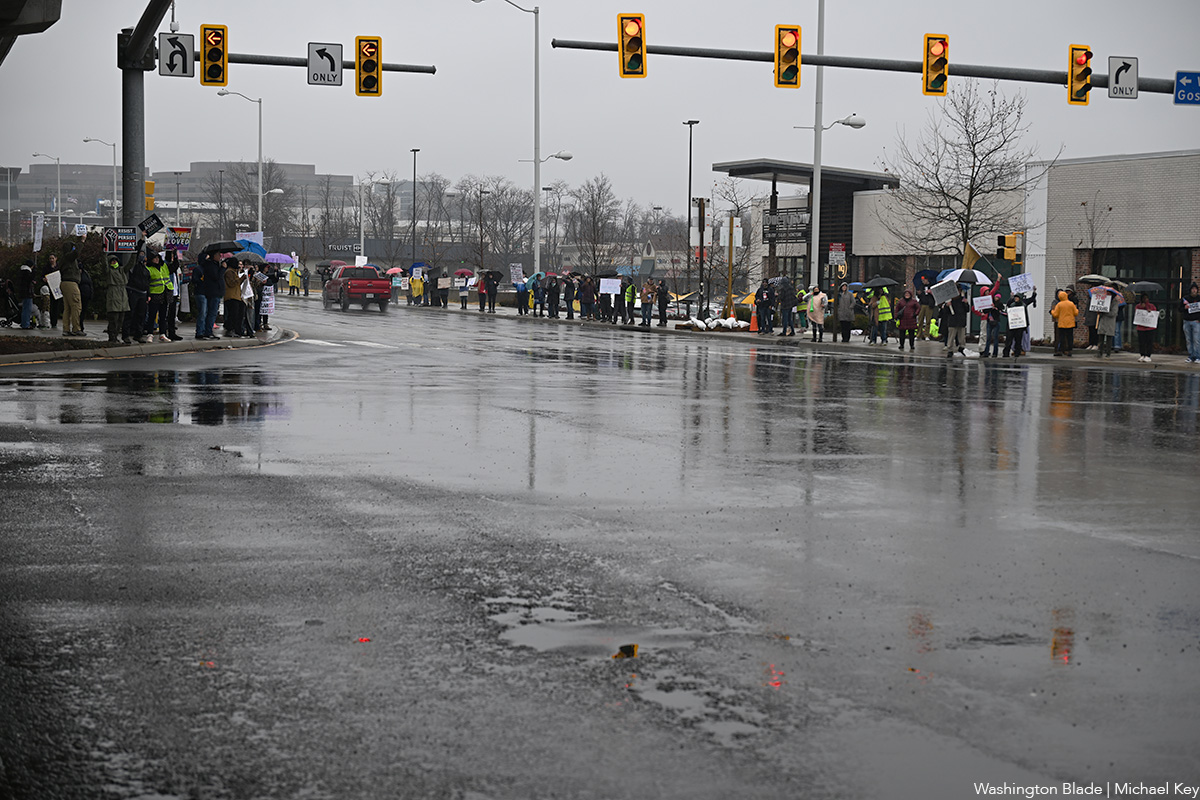
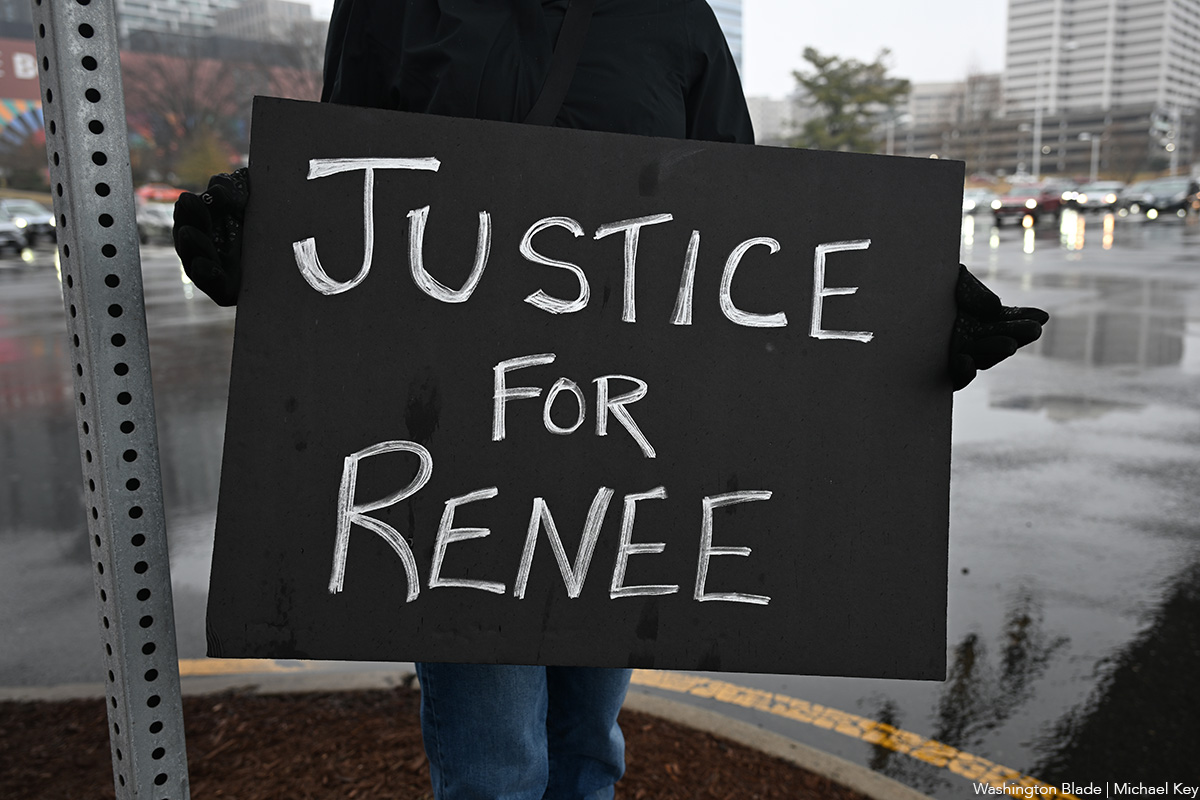


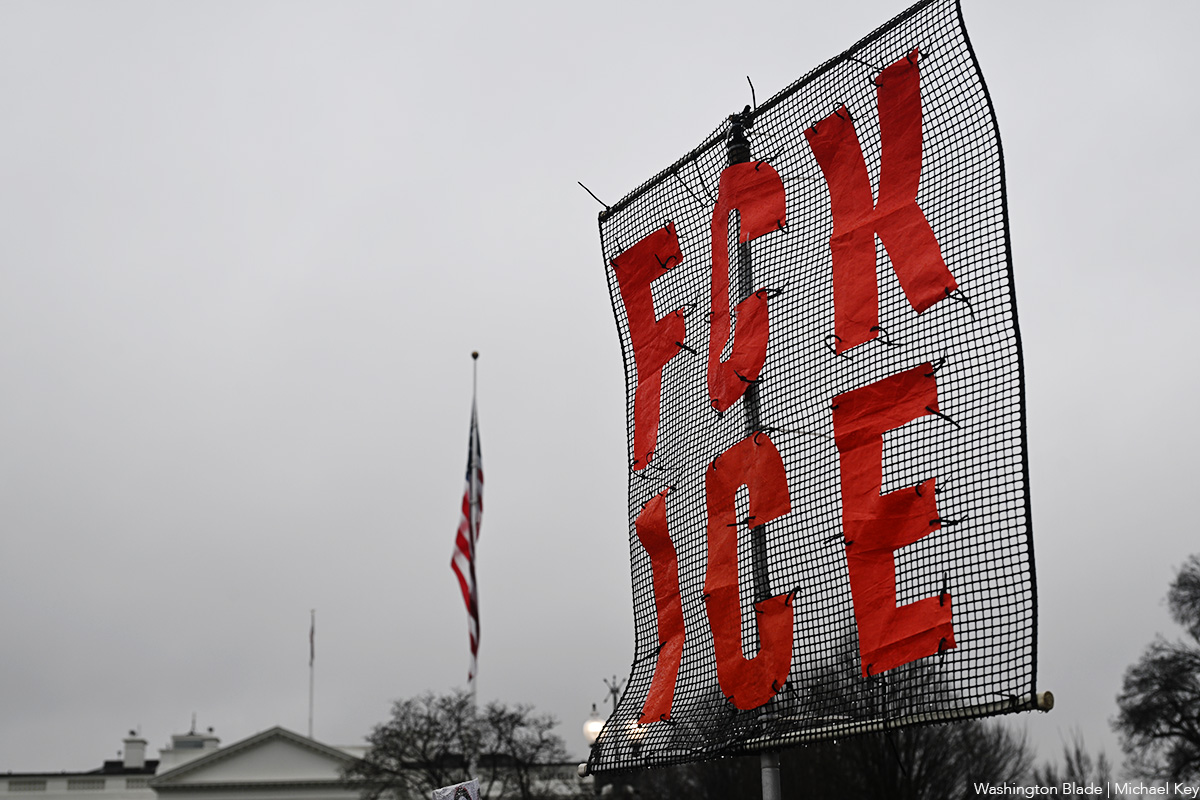


Books
Feminist fiction fans will love ‘Bog Queen’
A wonderful tale of druids, warriors, scheming kings, and a scientist
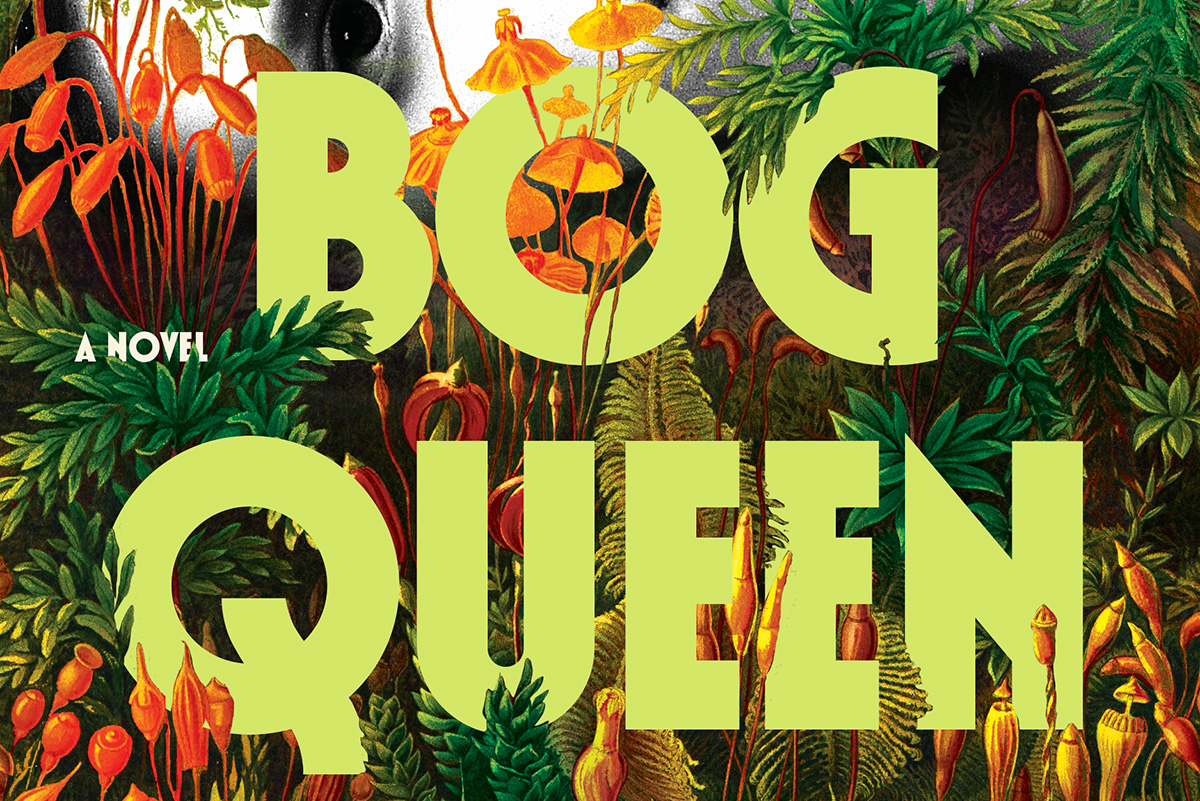
‘Bog Queen’
By Anna North
c.2025, Bloomsbury
$28.99/288 pages
Consider: lost and found.
The first one is miserable – whatever you need or want is gone, maybe for good. The second one can be joyful, a celebration of great relief and a reminder to look in the same spot next time you need that which you first lost. Loss hurts. But as in the new novel, “Bog Queen” by Anna North, discovery isn’t always without pain.

He’d always stuck to the story.
In 1961, or so he claimed, Isabel Navarro argued with her husband, as they had many times. At one point, she stalked out. Done. Gone, but there was always doubt – and now it seemed he’d been lying for decades: when peat cutters discovered the body of a young woman near his home in northwest England, Navarro finally admitted that he’d killed Isabel and dumped her corpse into a bog.
Officials prepared to charge him.
But again, that doubt. The body, as forensic anthropologist Agnes Lundstrom discovered rather quickly, was not that of Isabel. This bog woman had nearly healed wounds and her head showed old skull fractures. Her skin glowed yellow from decaying moss that her body had steeped in. No, the corpse in the bog was not from a half-century ago.
She was roughly 2,000 years old.
But who was the woman from the bog? Knowing more about her would’ve been a nice distraction for Agnes; she’d left America to move to England, left her father and a man she might have loved once, with the hope that her life could be different. She disliked solitude but she felt awkward around people, including the environmental activists, politicians, and others surrounding the discovery of the Iron Age corpse.
Was the woman beloved? Agnes could tell that she’d obviously been well cared-for, and relatively healthy despite the injuries she’d sustained. If there were any artifacts left in the bog, Agnes would have the answers she wanted. If only Isabel’s family, the activists, and authorities could come together and grant her more time.
Fortunately, that’s what you get inside “Bog Queen”: time, spanning from the Iron Age and the story of a young, inexperienced druid who’s hoping to forge ties with a southern kingdom; to 2018, the year in which the modern portion of this book is set.
Yes, you get both.
Yes, you’ll devour them.
Taking parts of a true story, author Anna North spins a wonderful tale of druids, vengeful warriors, scheming kings, and a scientist who’s as much of a genius as she is a nerd. The tale of the two women swings back and forth between chapters and eras, mixed with female strength and twenty-first century concerns. Even better, these perfectly mixed parts are occasionally joined by a third entity that adds a delicious note of darkness, as if whatever happens can be erased in a moment.
Nah, don’t even think about resisting.
If you’re a fan of feminist fiction, science, or novels featuring kings, druids, and Celtic history, don’t wait. “Bog Queen” is your book. Look. You’ll be glad you found it.
Movies
A Shakespearean tragedy comes to life in exquisite ‘Hamnet’
Chloe Zhao’s devastating movie a touchstone for the ages

For every person who adores Shakespeare, there are probably a dozen more who wonder why.
We get it; his plays and poems, composed in a past when the predominant worldview was built around beliefs and ideologies that now feel as antiquated as the blend of poetry and prose in which he wrote them, can easily feel tied to social mores that are in direct opposition to our own, often reflecting the classist, sexist, and racist patriarchal dogma that continues to plague our world today. Why, then, should we still be so enthralled with him?
The answer to that question might be more eloquently expressed by Chloe Zhao’s “Hamnet” – now in wide release and already a winner in this year’s barely begun awards season – than through any explanation we could offer.
Adapted from the novel by Maggie O’Farrell (who co-wrote the screenplay with Zhao), it focuses its narrative on the relationship between Will Shakespeare (Paul Mescal) and his wife Agnes Hathaway (Jessie Buckley), who meet when the future playwright – working to pay off a debt for his abusive father – is still just a tutor helping the children of well-to-do families learn Latin. Enamored from afar at first sight, he woos his way into her life, and, convincing both of their families to approve the match (after she becomes pregnant with their first child), becomes her husband. More children follow – including Hamnet (Jacobi Jupe), a “surprise” twin boy to their second daughter – but, recognizing Will’s passion for writing and his frustration at being unable to follow it, Agnes encourages him to travel to London in order to immerse himself in his ambitions.
As the years go by, Agnes – aided by her mother-in-law (Emily Watson) and guided by the nature-centric pagan wisdom of her own deceased mother – raises the children while her husband, miles away, builds a successful career as the city’s most popular playwright. But when an outbreak of bubonic plague results in the death of 11-year-old Hamnet in Will’s absence, an emotional wedge is driven between them – especially when Agnes receives word that her husband’s latest play, titled “Hamlet,” an interchangeable equivalent to the name of their dead son, is about to debut on the London stage.
There is nothing, save the bare details of circumstance around the Shakespeare family, that can be called factual about the narrative told in “Hamnet.” Records of Shakespeare’s private life are sparse and short on context, largely limited to civic notations of fact – birth, marriage, and death announcements, legal documents, and other general records – that leave plenty of space in which to speculate about the personal nuance such mundane details might imply. What is known is that the Shakespeares lost their son, probably to plague, and that “Hamlet” – a play dominated by expressions of grief and existential musings about life and death – was written over the course of the next five years. Shakespearean scholars have filled in the blanks, and it’s hard to argue with their assumptions about the influence young Hamnet’s tragic death likely had over the creation of his father’s masterwork. What human being would not be haunted by such an event, and how could any artist could avoid channeling its impact into their work, not just for a time but for forever after?
In their screenplay, O’Farrell and Zhao imagine an Agnes Shakespeare (most records refer to her as “Anne” but her father’s will uses the name “Agnes”) who stands apart from the conventions of her town, born of a “wild woman” in the woods and raised in ancient traditions of mysticism and nature magic before being adopted into her well-off family, who presents a worthy match and an intellectual equal for the brilliantly passionate creator responsible for some of Western Civilization’s most enduring tales. They imagine a courtship that would have defied the customs of the time and a relationship that feels almost modern, grounded in a love and mutual respect that’s a far cry from most popular notions of what a 16th-century marriage might look like. More than that, they imagine that the devastating loss of a child – even in a time when the mortality rate for children was high – might create a rift between two parents who can only process their grief alone. And despite the fact that almost none of what O’Farrell and Zhao present to us can be seen, at best, as anything other than informed speculation, it all feels devastatingly true.
That’s the quality that “Hamnet” shares with the ever-popular Will Shakespeare; though it takes us into a past that feels as alien to us as if it took place upon a different planet, it evokes a connection to the simple experience of being human, which cuts through the differences in context. Just as the kings, heroes, and fools of Shakespeare’s plays express and embody the same emotional experiences that shape our own mundane modern lives, the film’s portrayal of these two real-life people torn apart by personal tragedy speaks directly to our own shared sense of loss – and it does so with an eloquence that, like Shakespeare’s, emerges from the story to make it feel as palpable as if their grief was our own.
Yes, the writing and direction – each bringing a powerfully feminine “voice” to the story – are key to the emotional impact of “Hamnet,” but it’s the performances of its stars that carry it to us. Mescal, once more proving himself a master at embodying the kind of vulnerable masculine tenderness that’s capable of melting our hearts, gives us an accessible Shakespeare, driven perhaps by a spark of genius yet deeply grounded in the tangible humanity that underscores the “everyman” sensibility that informs the man’s plays. But it’s Buckley’s movie, by a wide margin, and her bold, fierce, and deeply affecting performance gives voice to a powerful grief, a cry against the injustice and cruelty of what we fumblingly call “fate” that resonates deep within us and carries our own grief, over losses we’ve had and losses we know are yet to come, along with her on the journey to catharsis.
That’s the word – “catharsis” – that defines why Shakespeare (and by extension, “Hamnet”) still holds such power over the imagination of our human race all these centuries later. The circumstantial details of his stories, wrapped up in ancient ideologies that still haunt our cultural imagination, fall away in the face of the raw expression of humanity to which his characters give voice. When Hamlet asks “to be or not to be?,” he is not an old-world Danish Prince contemplating revenge against a traitor who murdered his father; he is Shakespeare himself, pondering the essential mystery of life and death, and he is us, too.
Likewise, the Agnes Shakespeare of “Hamnet” (masterfully enacted by Buckley) embodies all our own sorrows – past and future, real and imagined – and connects them to the well of human emotion from which we all must drink; it’s more powerful than we expect, and more cleansing than we imagine, and it makes Zhao’s exquisitely devastating movie into a touchstone for the ages.
We can’t presume to speak for Shakespeare, but we are pretty sure he would be pleased.
-

 National5 days ago
National5 days agoWhat to watch for in 2026: midterms, Supreme Court, and more
-

 District of Columbia5 days ago
District of Columbia5 days agoImperial Court of Washington drag group has ‘dissolved’
-

 Colombia4 days ago
Colombia4 days agoGay Venezuelan man who fled to Colombia uncertain about homeland’s future
-

 Arts & Entertainment4 days ago
Arts & Entertainment4 days ago2026 Most Eligible LGBTQ Singles nominations

